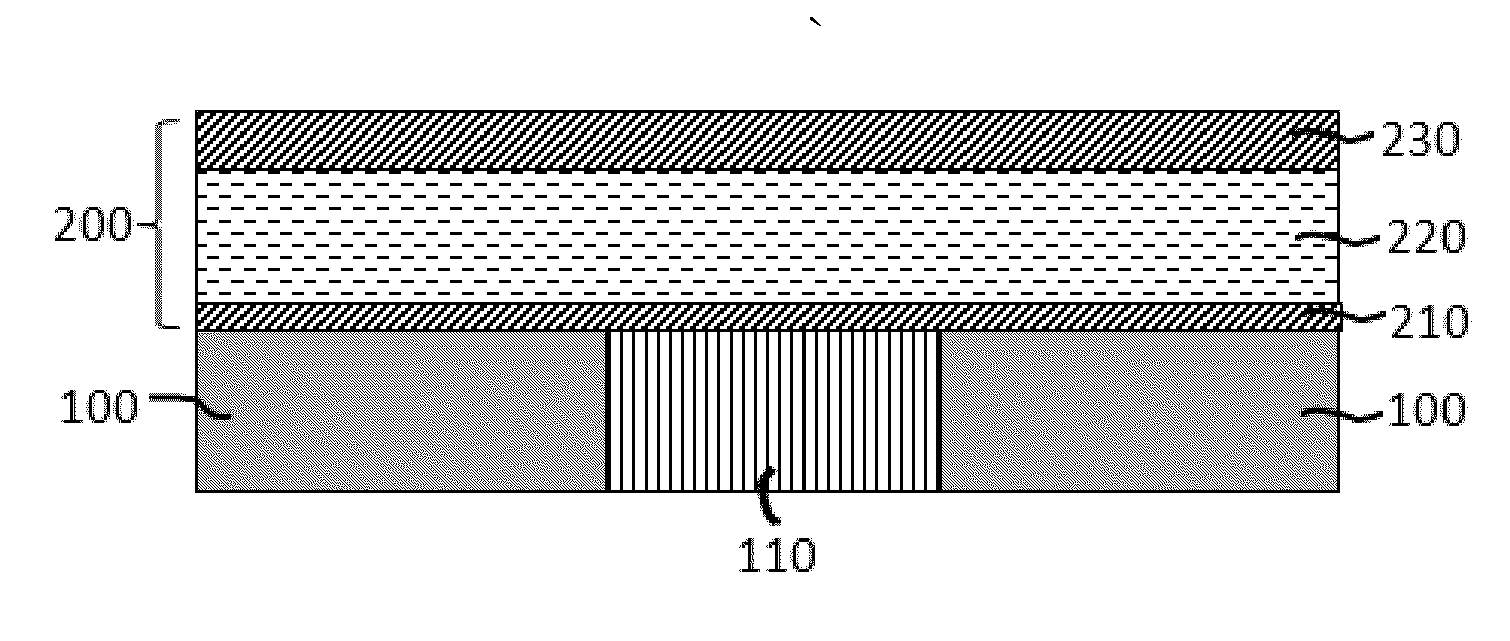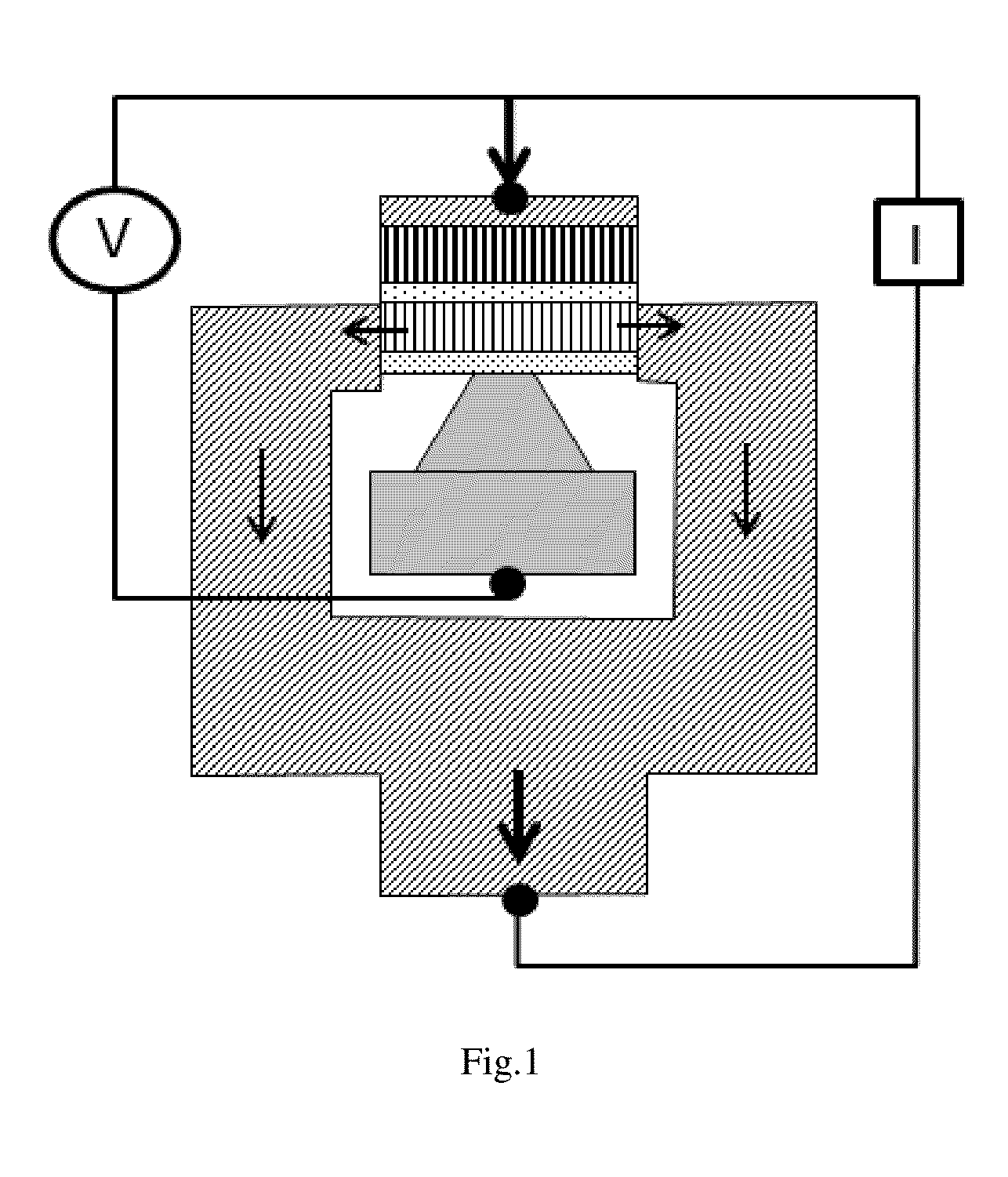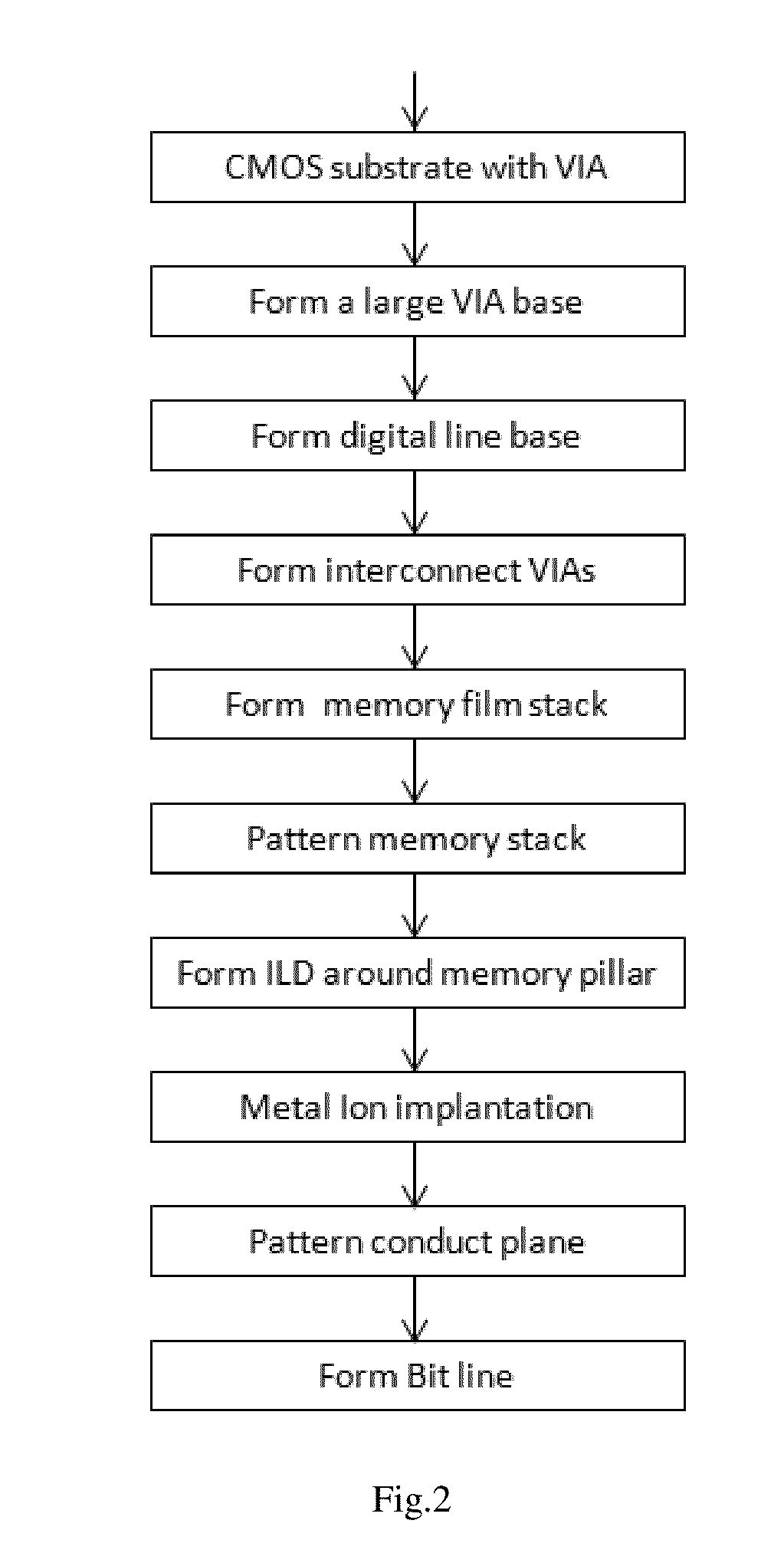Three-terminal spin transistor magnetic random access memory and the method to make the same
a technology of magnetic random access memory and three-terminal spin transistor, which is applied in the direction of magnetic field-controlled resistors, semiconductor devices, galvano-magnetic material selection, etc., can solve the problems of information readout errors increasing, value changes, and element unrecordable, so as to reduce the switching energy barrier of the recording layer, the effect of easy switching or revers
- Summary
- Abstract
- Description
- Claims
- Application Information
AI Technical Summary
Benefits of technology
Problems solved by technology
Method used
Image
Examples
Embodiment Construction
[0036]The three-terminal spin transistor magnetic random access memory (FIG. 1) contains a digital line at the bottom, a bit line on the top, and a magnetic memory cell in the middle. The middle memory cell has a bottom insulating layer (ILD), a magnetic memory layer, a dielectric MgO tunneling layer, a top reference layer, a cap layer and hard mask. The top reference layer has perpendicular magnetization to the plane, and the polarization of the middle memory layer can be either perpendicular to the plane or in the plane depending on the voltage applied between the top bit line and bottom digital line. Both read and write current flow through the top reference layer, middle memory film stack and VIA to / from the underneath CMOS control circuit (not shown). The digital line has a small contact area with the insulating layer below the memory cell which helps to reduce writing current when a voltage pulse is applied.
[0037]The fabrication process flow is shown in FIG. 2 which starts fro...
PUM
 Login to View More
Login to View More Abstract
Description
Claims
Application Information
 Login to View More
Login to View More - R&D
- Intellectual Property
- Life Sciences
- Materials
- Tech Scout
- Unparalleled Data Quality
- Higher Quality Content
- 60% Fewer Hallucinations
Browse by: Latest US Patents, China's latest patents, Technical Efficacy Thesaurus, Application Domain, Technology Topic, Popular Technical Reports.
© 2025 PatSnap. All rights reserved.Legal|Privacy policy|Modern Slavery Act Transparency Statement|Sitemap|About US| Contact US: help@patsnap.com



